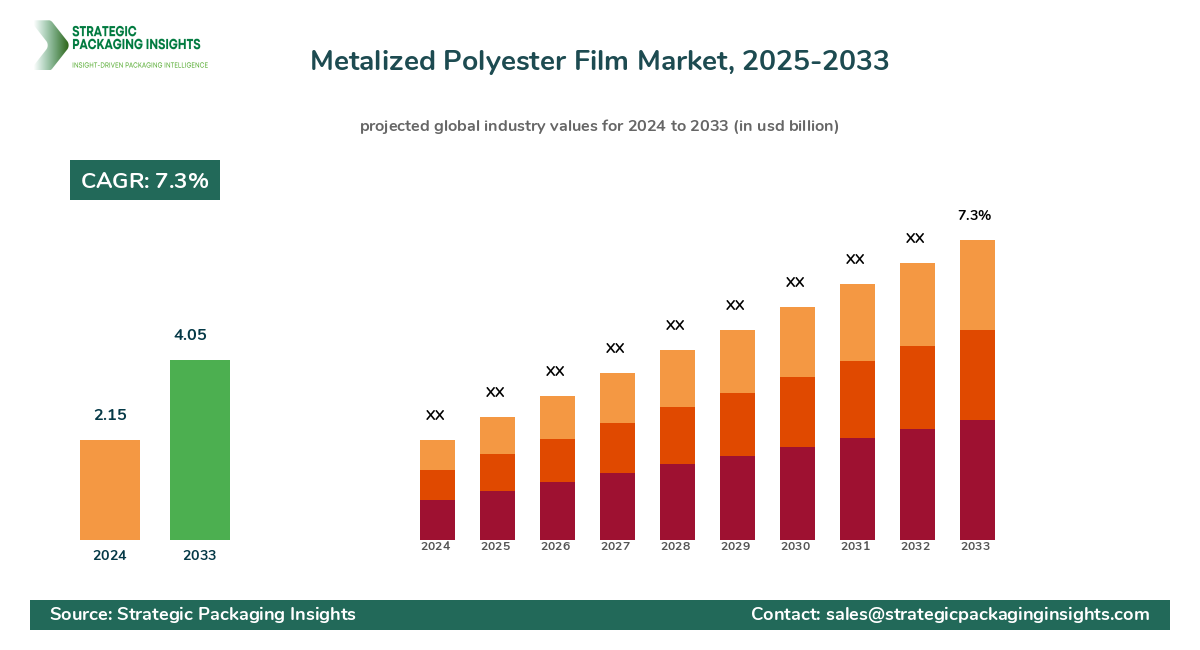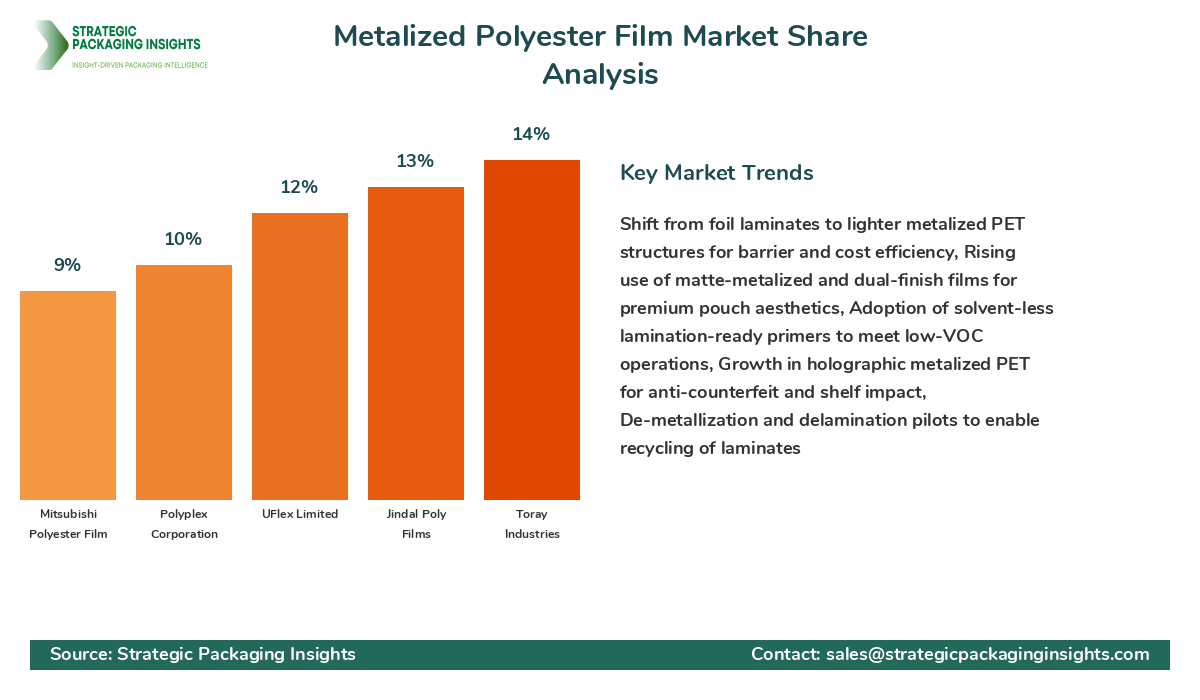- Home
- Advanced Packaging
- Metalized Polyester Film Market Size, Future Growth and Forecast 2033
Metalized Polyester Film Market Size, Future Growth and Forecast 2033
Metalized Polyester Film Market Segments - by Product Type (Holographic, Standard Metalized), Metal Type (Aluminum, Others), Application (Flexible Packaging, Labels & Wraps), End-Use Industry (Food & Beverage, Pharmaceuticals), and Region (Asia Pacific, North America, Europe, Latin America, and Middle East & Africa) - Market Dynamics, Growth Opportunities, Strategic Drivers, and PESTLE Outlook (2025–2033)
Metalized Polyester Film Market Outlook
The Metalized Polyester Film market was valued at $2.15 billion in 2024 and is projected to reach $4.05 billion by 2033, growing at a CAGR of 7.3% during the forecast period 2025–2033. Demand is rising as brand owners and converters push for higher barrier packaging that cuts material weight without sacrificing shelf life, clarity, or machinability. Metalized PET (often aluminum-coated BOPET) offers a strong combination of oxygen and moisture barrier, gloss, heat resistance, and dimensional stability, making it a preferred layer in snacks, confectionery, coffee, dairy, personal care, and pharmaceutical packs. Beyond packaging, adoption is expanding in Labels, decorative wraps, thermal and acoustic insulation, electronics shielding, and industrial laminations. Growth correlates with rapid expansion of organized retail, e-commerce-ready packaging, and the migration from rigid to flexible formats in Asia and North America. At the same time, sustainable design is accelerating the replacement of foil laminates and multi-material structures with mono-material or fewer-layer structures that still deliver high performance—an area where advanced metalized polyester film grades shine by enabling downgauging and recyclability-forward designs when paired carefully with compatible sealant webs.
Investments are flowing into vacuum metallizing capacity, in-line coating, plasma treatment, and advanced surface chemistries that improve metal adhesion, printability, and lamination performance under higher line speeds. Regulatory pressure on food contact safety, EPR-linked design targets, and corporate decarbonization goals are reshaping product development, favoring solvent-less laminations and lower overall carbon footprints per pack. While metalized PET competes with aluminum foil, metallized BOPP, and high-barrier clear coatings (such as SiOx and AlOx), its balanced cost-to-performance profile supports steady share gains in barrier-flexible formats. Cost volatility in PTA/MEG feedstocks, energy costs for metallization, and recycling infrastructure gaps remain real constraints. However, technology roadmaps—like enhanced barrier retention after flex-cracking, higher metal bond strength, and de-metallization pathways for recycling—unlock opportunities for film makers aligned with brand owner sustainability roadmaps, especially in food and pharma where safety, consistency, and compliance are critical.
Report Scope
| Attributes | Details |
| Report Title | Metalized Polyester Film Market Size, Future Growth and Forecast 2033 |
| Base Year | 2024 |
| Historic Data | 2017-2023 |
| Forecast Period | 2025-2033 |
| Number of Pages | 147 |
| Product Type | Holographic, Standard Metalized |
| Metal Type | Aluminum, Others |
| Application | Flexible Packaging, Labels & Wraps |
| End-Use Industry | Food & Beverage, Pharmaceuticals |
| Customization Available | Yes* |
Key Highlights Metalized Polyester Film Market
- Brand owners are replacing foil-based laminates with metalized PET structures to reduce weight by 10–30% while maintaining comparable barrier performance in snacks, coffee, and dry dairy.
- Advanced adhesion-promoting primers and plasma treatments are lifting metal bond strength by 20–40%, improving laminate durability through converting, transport, and shelf life.
- Holographic metalized PET is gaining traction in premium confectionery, spirits, cosmetics, and tobacco packaging as a cost-effective anti-counterfeit and shelf differentiation tool.
- Converters report rising demand for matte-metalized and dual-finish films that balance premium aesthetics with high-barrier specs for reseal pouches and stand-up pouches.
- Electronics and industrial users are expanding orders for metalized PET in EMI/RFI shielding, cable wraps, insulation, and reflective insulation for HVAC and construction.
- Food-contact compliant grades with global regulatory endorsements (FDA, EU No. 10/2011) are becoming baseline requirements across multinational packaging programs.
- Emerging recycling approaches—de-metallization and solvent-based delamination—are piloting circular end-of-life routes for metalized laminates in select regions.
- Asia Pacific leads capacity additions with integrated BOPET lines plus multiple vacuum metallizers near converter clusters in India, China, Thailand, and Indonesia.
- Supply partnerships are deepening between film makers and ink/adhesive suppliers to ensure printability, low-odor profiles, and solvent-less lamination compatibility.
- Energy-efficient metallizers and renewable power sourcing are increasingly used as differentiators in tenders with Scope 3 reduction targets.
Competitive Intelligence
The competitive landscape is anchored by integrated BOPET producers with in-house vacuum metallizing and a strong global converter network. Toray Industries, Jindal Poly Films, UFlex (Flex Films), SRF Limited, Polyplex Corporation, Mitsubishi Polyester Film, DuPont Teijin Films, Cosmo First, Vacmet India, and DUNMORE together command a significant share of global metalized PET supply. Toray, Mitsubishi, and DuPont Teijin emphasize high-spec barrier, electronics-grade films, and stringent global compliance, leveraging multi-continent plants and deep R&D pipelines. Jindal, UFlex, SRF, Polyplex, Cosmo, and Vacmet lead in cost-competitive Packaging Films, fast capacity scaling, and broad SKUs from standard to holographic and matte-metalized grades. DUNMORE differentiates with specialty metallization, aerospace and energy certifications, and custom-engineered constructions. Market share shifts favor players adding high-speed metallizers (3+ meter widths), solvent-less lamination-friendly primers, and clear barrier alternatives that integrate into mono-material strategies. Strengths include scale, wide product portfolios, and global certifications; weaknesses typically center on feedstock volatility exposure, power intensity of metallization, and recycling narrative gaps. Companies gaining ground show double-digit growth in Asia and the Middle East, strategic partnerships with large converters and brand owners, and credible carbon reduction pathways; laggards face margin pressure in commodity SKUs, limited innovation cadence, or concentrated geographic exposure.
Regional Market Intelligence of Metalized Polyester Film
Global demand splits across regions as follows in 2024: Asia Pacific at approximately $0.94 billion, North America at $0.56 billion, Europe at $0.47 billion, Latin America at $0.11 billion, and Middle East & Africa at $0.07 billion. By 2033, Asia Pacific is forecast to reach about $1.85 billion on the back of packaged food premiumization, modern retail growth, and a shift to flexible formats in India, China, and Southeast Asia. North America is set to rise to around $0.96 billion as brands pivot from foil to metalized PET laminates to meet cost, barrier, and sustainability commitments, with strong traction in snacks, pet food, and coffee. Europe should approach $0.85 billion, shaped by stringent packaging rules, expanded producer responsibility, and increasing use of solvent-less laminations and recyclable-ready structures. Latin America is projected near $0.22 billion with momentum in Brazilian snacks, dairy powders, and label stock. Middle East & Africa should reach roughly $0.17 billion, driven by industrial insulation, personal care, and growing regional converting capacity. Regional differences include raw material sourcing strategies, energy costs affecting metallizing economics, and varying speeds of adoption for circular solutions.
North America: Growth is driven by film-lighting initiatives, strong private-label expansion, and the migration from rigid tubs to pouches. High labor and energy costs push converters to prefer films with reliable runnability and fewer downtime incidents, favoring premium, well-primed metalized PET. Europe: Regulatory frameworks (PPWR, SUP measures) emphasize design for recycling and lower VOC operations, which accelerates demand for solvent-less compatible films, de-inkable coatings, and transparent barrier alternatives co-specified with metalized solutions for multilayer performance. Asia Pacific: Capacity additions, rising middle-class consumption, and export-oriented converting hubs produce the strongest absolute gains. India is a standout with rapid capacity expansion across BOPET and metallizing lines. Latin America: Currency volatility and import dependencies encourage local metallizing investments and partnerships. Middle East & Africa: Industrial end uses, reflective insulation in building efficiency projects, and pharmaceuticals underpin steady growth, while infrastructure build-out enables new converting clusters.
Top Countries Insights in Metalized Polyester Film
China’s market is estimated at about $0.48 billion in 2024 with a CAGR of 9%, led by snacks, instant beverages, and a robust electronics base that requires EMI shielding and insulation materials. Government efficiency targets in construction and industrial sectors also support reflective insulation demand. India stands near $0.26 billion with a CAGR of 11%, underpinned by fast-moving consumer goods, organized retail expansion, and heavy investments in metallizing assets; policy pushes on Make in India and a strong converter ecosystem reinforce cost leadership and export growth. The United States accounts for roughly $0.42 billion with a CAGR of 6%, driven by reformatting of national brands into recyclable-ready designs, adoption in premium coffee and pet care, and continued strength in private labels; key challenges include tight labor markets and the need for robust food-contact and low-odor compliance. Germany is around $0.18 billion with a CAGR of 5%, characterized by high standards for sustainability, strong engineering requirements for industrial films, and leading converters that push for solvent-less, low-migration structures; the market also navigates energy price volatility. Brazil is near $0.09 billion with a CAGR of 7%, with growth in snacks, dairy powders, and labels, while local metallizing capacity additions and logistics optimization help stabilize supply; regulatory alignment and inflation management remain watch points.
Product Type Analysis
Standard metalized polyester films dominate volume due to their balanced barrier-to-cost profile, proven machinability on high-speed lines, and compatibility with diverse inks, adhesives, and sealing layers. Converters favor consistent metal laydown, strong adhesion, and stable thermal behavior to reduce waste and downtime across slitters and laminators. Innovations in primer chemistries and plasma treatments improve metal adhesion and barrier retention after flexing, tackling a common pain point in real-world distribution. Standard grades are evolving toward matte-metalized and dual-finish options that provide premium looks without sacrificing pack integrity. They also serve as workhorse substrates in insulation, labels, and industrial laminates, with continuous upgrades to haze, gloss, and surface energy for better print fidelity and post-lamination performance. Pricing remains sensitive to PET resin and energy costs, which means supply contracts increasingly include indexation and energy surcharges to protect margins during volatility.
Holographic metalized PET is expanding from decorative wraps into mainstream brand security and premiumization. Enhanced diffraction patterns, micro-embossing, and registered holography enable compelling shelf impact and anti-counterfeit features for spirits, tobacco, cosmetics, and high-value confectionery. As gravure and flexo presses move toward shorter runs with digital embellishments, holographic films that run cleanly with minimal static and curl offer clear ROI. Suppliers that manage pattern libraries, custom mastering, and fast design-to-run cycles are winning specifications. While holographic material carries a premium, downgauging and impact-driven sales lift help offset cost. Increasingly, brand owners ask for recyclability-conscious constructions, prompting development of holographic effects on thinner substrates with easier delamination or compatible mono-material laminates. Certifications for food contact and low migration further expand the addressable base, especially in sealed flow-wraps and premium pouches.
Metal Type Analysis
Aluminum remains the default metallization for PET because it delivers strong oxygen and moisture barrier at competitive cost while maintaining the mechanical advantages of BOPET. Advances in vacuum metallizing technology, including better evaporation sources, web handling, and in-line plasma, have improved aluminum laydown uniformity and reduced pinholes, which boosts yield and barrier reliability. Aluminum-coated PET often replaces foil in snack and powdered products, offering flex-crack resistance and lighter material usage. It also supports strong light barrier for sensitive products like coffee and nutraceuticals. On the sustainability front, suppliers are developing de-metallization processes and adhesive systems that facilitate delamination to support circularity pilots. Food-contact and regional compliance (FDA, EU) are well established, and many suppliers are adding ESG-linked disclosures, energy-efficient metallizers, and renewable energy sourcing to differentiate in tenders.
Other metals and specialty coatings—such as copper, stainless steel, or patterned metal layers—occupy niche roles in electronics, shielding, antenna substrates, and functional industrial laminates. Though a smaller slice of total volume, these options command higher margins due to technical specifications, tighter tolerances, and certification requirements (for aerospace, defense, and high-reliability industrial uses). Growth is paced by 5G infrastructure, automotive electrification, and energy systems that need EMI/RFI management and thermal control. Suppliers competing here emphasize precision coating, traceability, cleanroom operations, and collaborative design with OEMs. While costs are higher and supply chains more complex, switching barriers are also significant, which supports stable share for incumbents that deliver consistent quality and documentation. The biggest opportunities arise when specialty metal layers are integrated with primers and functional topcoats that streamline converting steps and reduce total cost of use for the customer.
Application Analysis
Flexible packaging is the engine of demand, spanning snacks, bakery, confectionery, beverages, dairy powders, and pet food. Metalized PET enables strong oxygen and moisture barrier in duplex and triplex laminates while maintaining good stiffness, tear resistance, and print gloss. As e-commerce reshapes packaging, brands need flexible structures that protect against scuffing and temperature swings; metalized PET’s robustness and barrier consistency help reduce returns and waste. Downgauging from 12–15 microns to thinner gauges is increasingly common, enabled by better metal adhesion and advanced sealants that maintain pack integrity. Clear-to-recycle initiatives push brands to minimize incompatible layers, so film makers are co-developing constructions that balance barrier, sealability, and recyclability claims under country-specific guidelines. Converters value consistent COF, low curl, and stable winding; film suppliers that deliver tight specs and support changeover efficiency gain preferred-vendor status.
Labels and wraps are the second growth pillar, benefiting from the film’s gloss, stiffness, and metallic aesthetics. Pressure-sensitive labels, wrap-around beverage labels, and decorative wraps leverage metalized PET for premium looks and light-blocking performance. As brand owners seek eye-catching yet sustainable options, thinner label stock with robust topcoats that accept a wide ink set (UV, water-based, EB) are favored. Demand is rising for high-adhesion metal layers that endure die-cutting, high-speed application, and cold-chain handling. In specialized segments, tamper-evident and security labels incorporate holographic metalized PET to deter counterfeiting. The move toward liner reduction and recyclability-aware label systems motivates innovations such as wash-off adhesives and topcoats optimized for de-inking, aligning aesthetics with circular-economy ambitions.
End-Use Industry Analysis
Food & beverage is the largest end-use sector, powered by rapid SKU proliferation, convenience culture, and the premiumization of snacks, coffee, and nutraceuticals. Metalized PET helps brand owners extend shelf life, control aroma loss, and maintain crispness—critical in competitive snack aisles. As private labels scale, consistency and cost are paramount; converters demand films with proven runnability and low defect rates to sustain lean operations. Sustainability targets push the switch from foil laminations to metalized PET structures that lower overall material use and carbon intensity without sacrificing barrier. In beverages and powdered products, high light and oxygen barriers protect sensitive ingredients, while high-gloss metalized finishes support visual appeal. The rise of single-serve and multi-serve pouches further boosts demand for films that deliver strong seal integrity, puncture resistance, and tolerance to retort or hot-fill in specialized cases.
Pharmaceuticals are adopting metalized PET for blister lidding alternatives, overwraps, sachets, and medical device protection where barrier, cleanliness, and regulatory compliance intersect. Low-odor, low-migration formulations and validated food/pharma contact are becoming table stakes. With serialization and anti-counterfeit requirements tightening, holographic and security-enhanced metalized films are gaining traction in secondary packs and tamper-evident features. Controlled environments, data-rich documentation, and change control protocols are important buying criteria, benefiting suppliers with strong quality systems and multi-region compliance. As temperature-sensitive biologics and self-care medical devices grow, demand for high-reflectivity and insulating laminates also increases, opening opportunities for specialty metalized PET in thermal envelopes and cold-chain packaging where performance validation and repeatability are vital.
The market’s top tier is relatively consolidated, with Toray Industries, Jindal Poly Films, and UFlex forming a leading triad across global packaging accounts and high-spec applications. Toray’s premium technical portfolio and multi-continent footprint secure strong share in electronics and specialty grades, while Jindal and UFlex leverage competitive cost structures, fast capacity additions, and broad SKU coverage to win packaging conversions at scale. Polyplex, SRF, Mitsubishi Polyester Film, DuPont Teijin Films, Cosmo First, Vacmet India, and DUNMORE round out a capable second wave. Over the last two years, share gains are most visible among players commissioning new high-speed metallizers and integrating primer/topcoat chemistries that enable solvent-less laminations and downgauging—factors that win large CPG bids. Companies with energy-efficient operations and credible carbon reporting also earn preferential scoring in tenders. Intensifying competition has moderated pricing in commodity grades, pushing suppliers to differentiate on consistent barrier, adhesion, and runnability metrics plus service reliability. Strategic partnerships with adhesive and ink makers, as well as co-development with global converters, are shaping a more collaborative innovation model that accelerates time-to-spec and helps lock in multi-year supply agreements.
Metalized Polyester Film Market Segments
The Metalized Polyester Film market has been segmented on the basis of
Product Type
- Holographic
- Standard Metalized
Metal Type
- Aluminum
- Others
Application
- Flexible Packaging
- Labels & Wraps
End-Use Industry
- Food & Beverage
- Pharmaceuticals
Primary Interview Insights
Which application areas are driving the strongest order growth for metalized PET?
What technical features are most requested by converters?
How are sustainability requirements changing specifications?
Where do you see the biggest regional capacity additions?
Latest Reports

The corrugated board packaging market was valued at $250 billion in 2024 and is projected to reach $380 billion by 2033, growing at a CAGR of 4.5% during the forecast period 2025–2033.
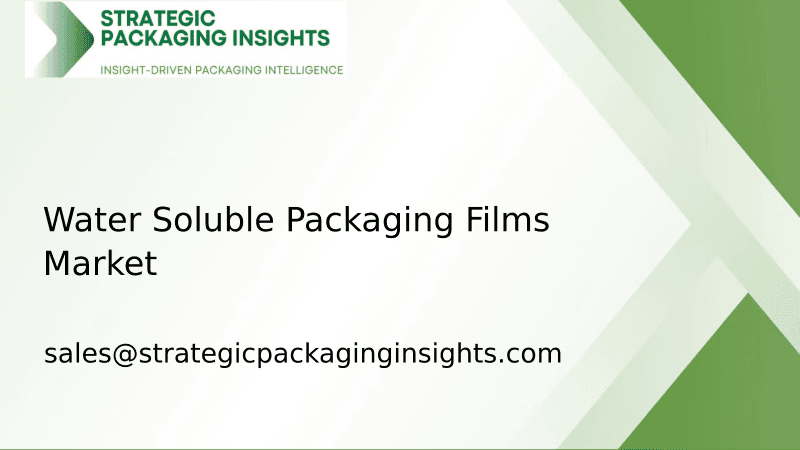
The Water Soluble Packaging Films market was valued at $2.8 billion in 2024 and is projected to reach $5.6 billion by 2033, growing at a CAGR of 8.1% during the forecast period 2025–2033.

The Aluminium Foil Packaging market was valued at $25 billion in 2024 and is projected to reach $40 billion by 2033, growing at a CAGR of 5.5% during the forecast period 2025–2033.

The self-heating food packaging market was valued at $4.5 billion in 2024 and is projected to reach $7.8 billion by 2033, growing at a CAGR of 6.2% during the forecast period 2025–2033.

The Smart Container market was valued at $2.5 billion in 2024 and is projected to reach $8.7 billion by 2033, growing at a CAGR of 14.5% during the forecast period 2025–2033.

The Automatic Labeling Machine market was valued at $2.5 billion in 2024 and is projected to reach $4.8 billion by 2033, growing at a CAGR of 7.2% during the forecast period 2025–2033.

The Hot Melt Glue Labeler market was valued at $1.2 billion in 2024 and is projected to reach $2.3 billion by 2033, growing at a CAGR of 6.5% during the forecast period 2025–2033.

The Ethical Label market was valued at $1.5 billion in 2024 and is projected to reach $3.2 billion by 2033, growing at a CAGR of 8.5% during the forecast period 2025–2033.

The Packaging Tensioner market was valued at $1.2 billion in 2024 and is projected to reach $2.3 billion by 2033, growing at a CAGR of 6.5% during the forecast period 2025–2033.
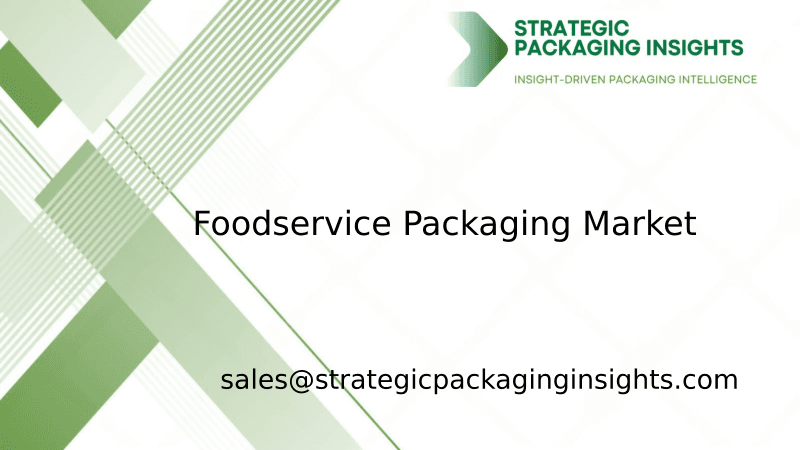
The foodservice packaging market was valued at $120 billion in 2024 and is projected to reach $180 billion by 2033, growing at a CAGR of 4.5% during the forecast period 2025–2033.
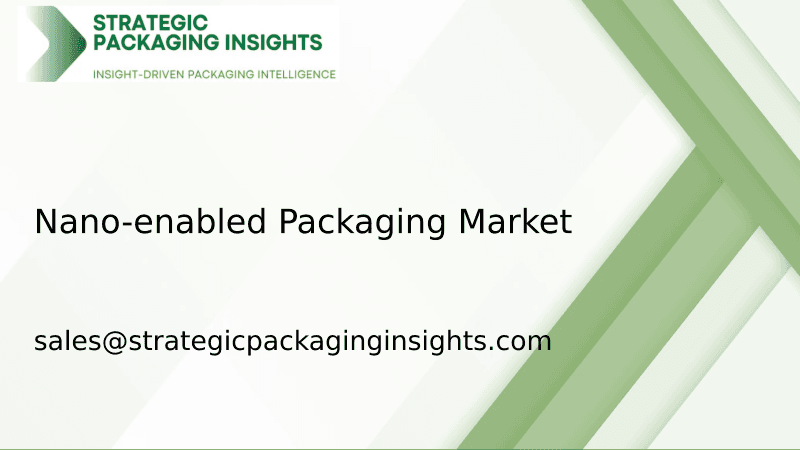
The nano-enabled packaging market was valued at $15.2 billion in 2024 and is projected to reach $35.6 billion by 2033, growing at a CAGR of 9.5% during the forecast period 2025–2033.
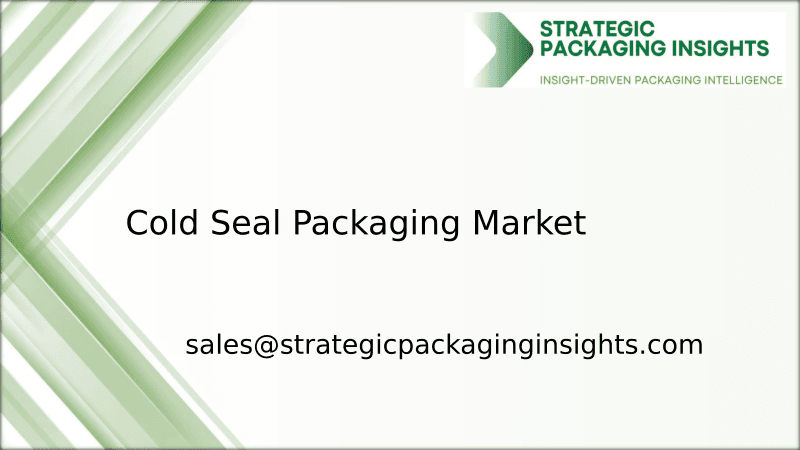
The Cold Seal Packaging market was valued at $1.5 billion in 2024 and is projected to reach $2.3 billion by 2033, growing at a CAGR of 4.8% during the forecast period 2025–2033.
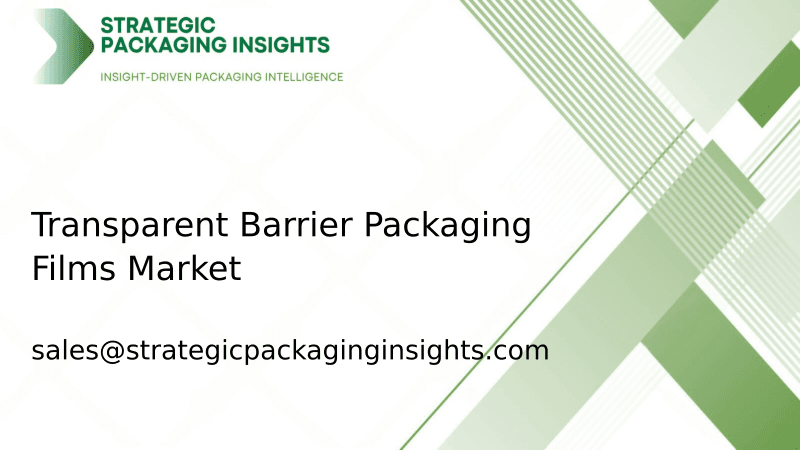
The Transparent Barrier Packaging Films market was valued at $12.5 billion in 2024 and is projected to reach $20.3 billion by 2033, growing at a CAGR of 5.8% during the forecast period 2025–2033.
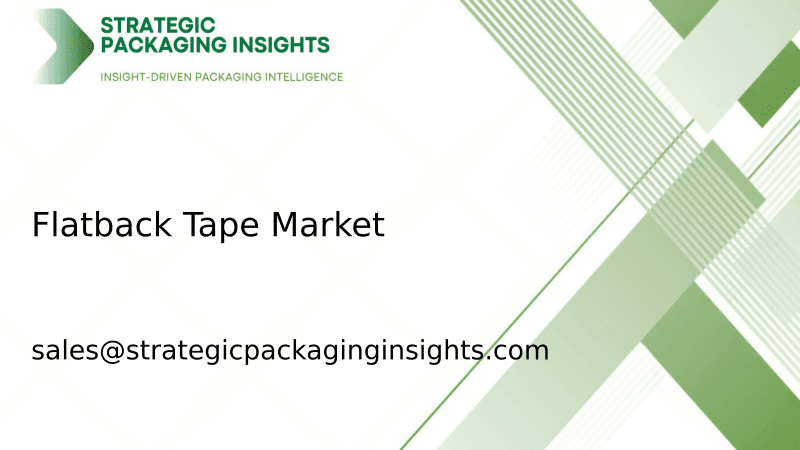
The Flatback Tape market was valued at $2.5 billion in 2024 and is projected to reach $4.1 billion by 2033, growing at a CAGR of 5.8% during the forecast period 2025–2033.
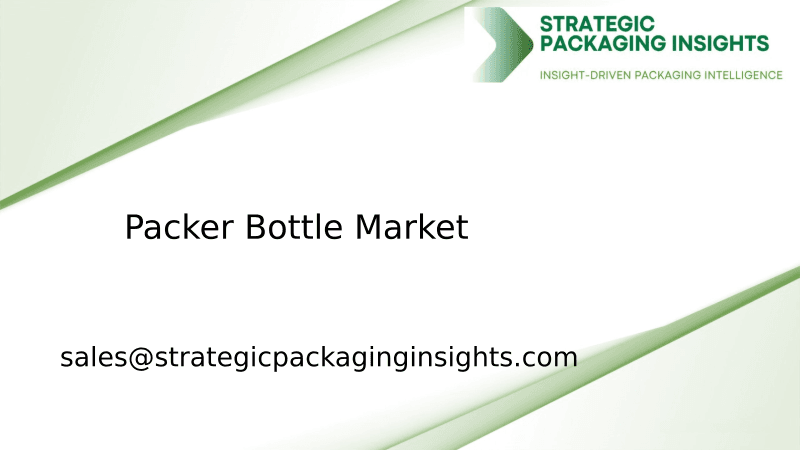
The packer bottle market was valued at $3.5 billion in 2024 and is projected to reach $5.8 billion by 2033, growing at a CAGR of 5.2% during the forecast period 2025–2033.
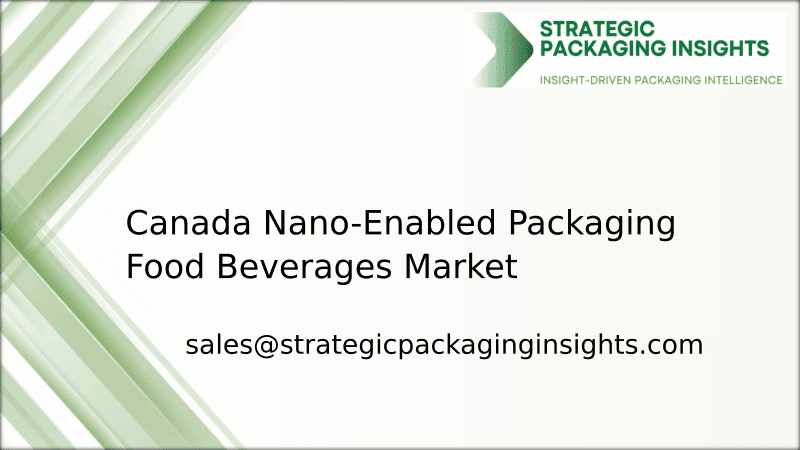
The Canada Nano-Enabled Packaging Food Beverages market was valued at $1.2 billion in 2024 and is projected to reach $3.5 billion by 2033, growing at a CAGR of 12.5% during the forecast period 2025–2033.
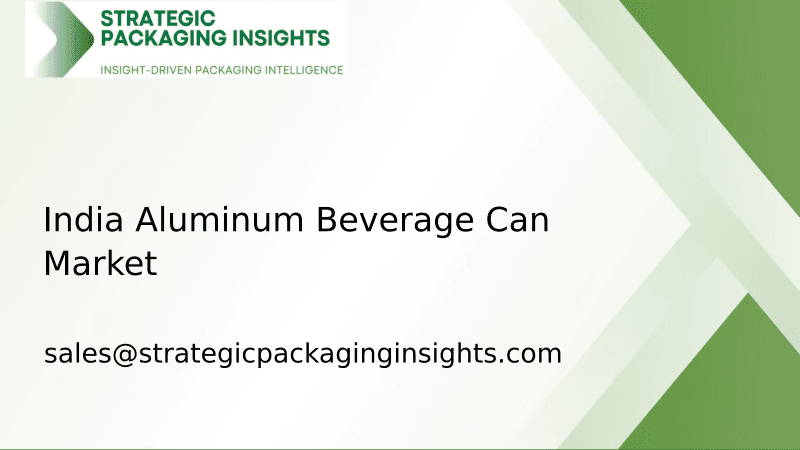
The India Aluminum Beverage Can market was valued at $1.2 billion in 2024 and is projected to reach $2.5 billion by 2033, growing at a CAGR of 8.5% during the forecast period 2025–2033.
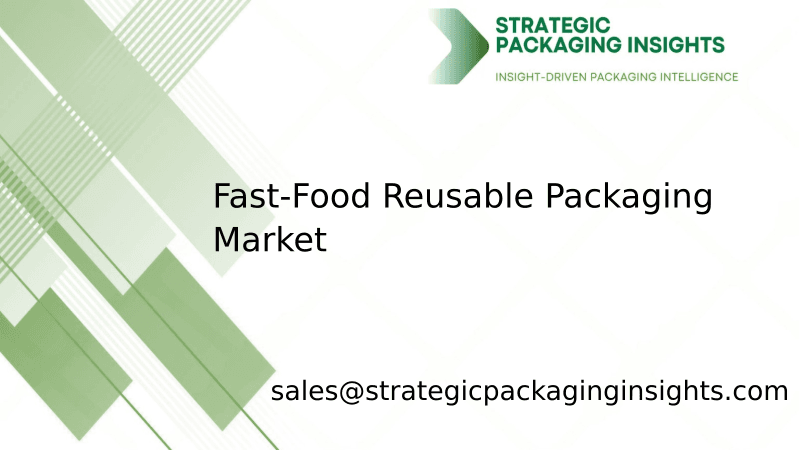
The fast-food reusable packaging market was valued at $1.2 billion in 2024 and is projected to reach $3.5 billion by 2033, growing at a CAGR of 12.5% during the forecast period 2025–2033.
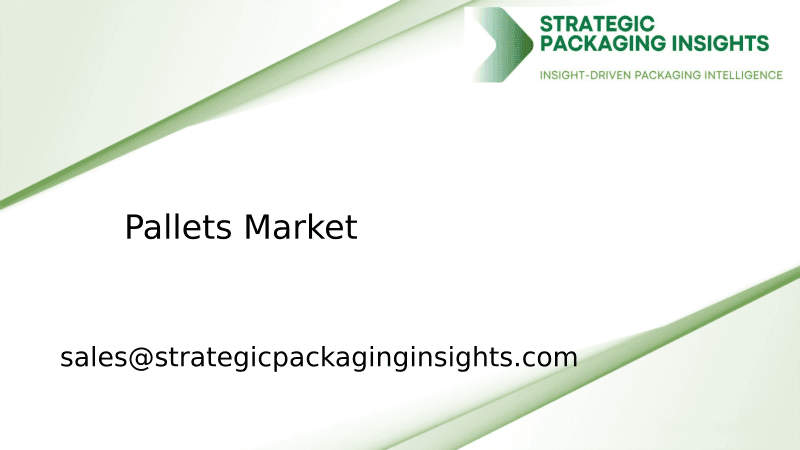
The pallets market was valued at $59.91 billion in 2024 and is projected to reach $88.69 billion by 2033, growing at a CAGR of 4.5% during the forecast period 2025–2033.
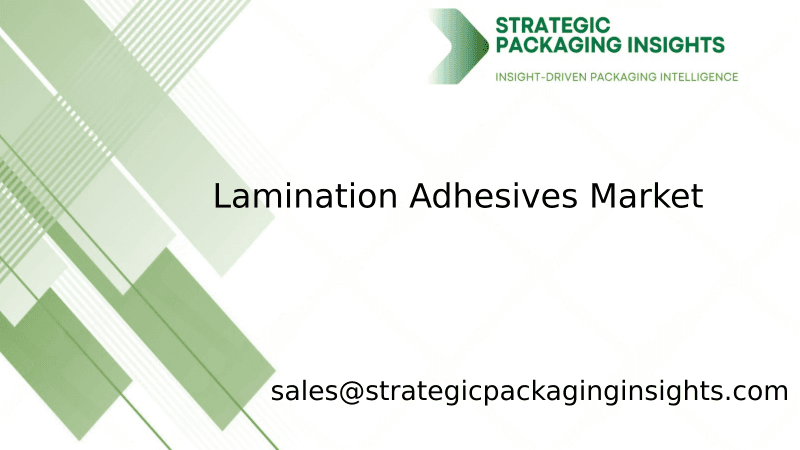
The lamination adhesives market was valued at $2.5 billion in 2024 and is projected to reach $4.1 billion by 2033, growing at a CAGR of 5.8% during the forecast period 2025–2033.
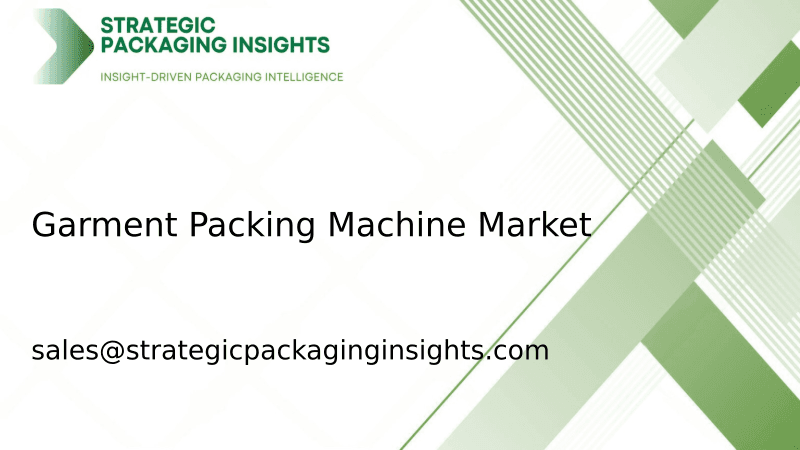
The garment packing machine market was valued at $1.2 billion in 2024 and is projected to reach $2.5 billion by 2033, growing at a CAGR of 8.5% during the forecast period 2025–2033.
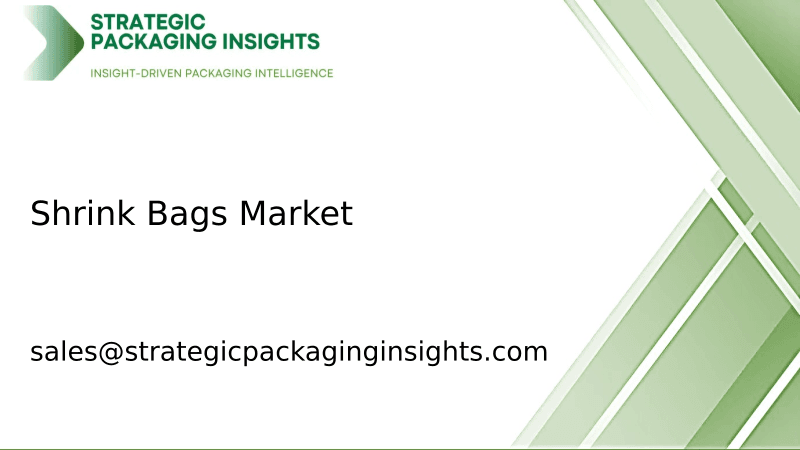
The shrink bags market was valued at $3.5 billion in 2024 and is projected to reach $5.8 billion by 2033, growing at a CAGR of 5.2% during the forecast period 2025–2033.
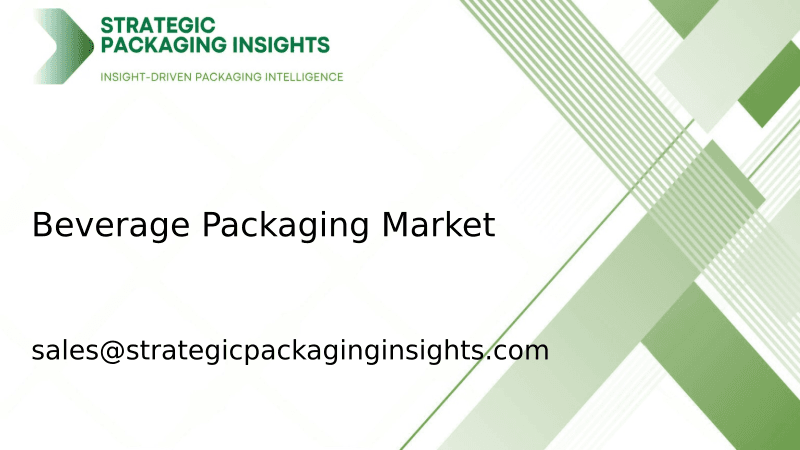
The beverage packaging market was valued at $128 billion in 2024 and is projected to reach $186 billion by 2033, growing at a CAGR of 4.2% during the forecast period 2025–2033.
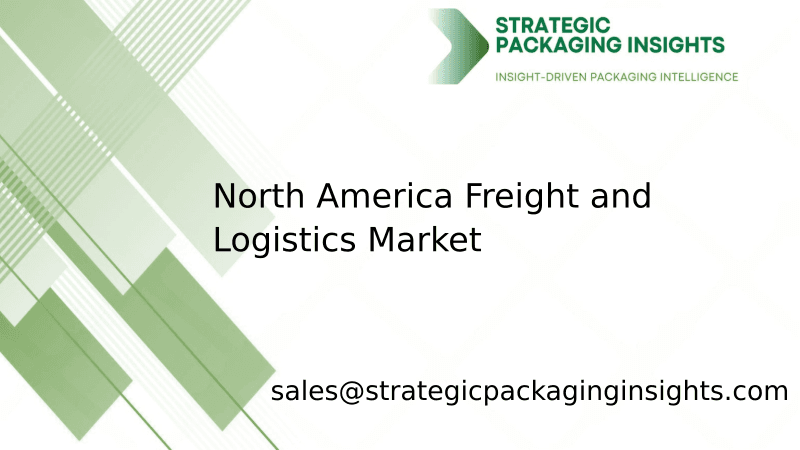
The North America Freight and Logistics market was valued at $1,200 billion in 2024 and is projected to reach $1,800 billion by 2033, growing at a CAGR of 4.5% during the forecast period 2025–2033.
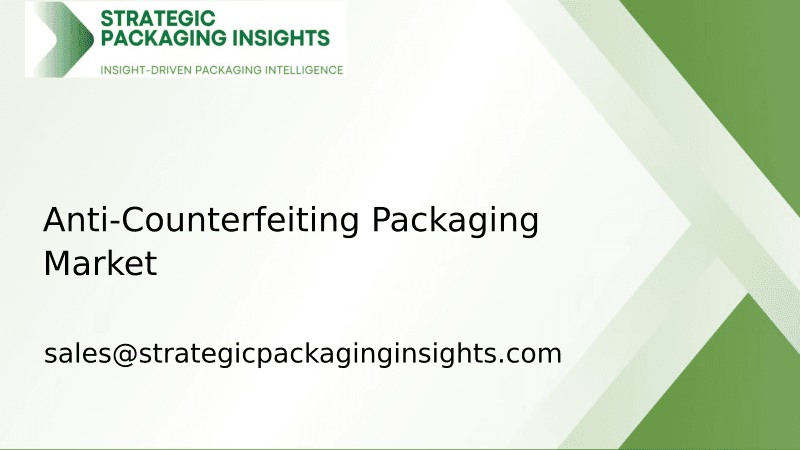
The Anti-Counterfeiting Packaging market was valued at $105 billion in 2024 and is projected to reach $182 billion by 2033, growing at a CAGR of 6.5% during the forecast period 2025–2033.

The corrugated board packaging market was valued at $250 billion in 2024 and is projected to reach $380 billion by 2033, growing at a CAGR of 4.5% during the forecast period 2025–2033.

The Water Soluble Packaging Films market was valued at $2.8 billion in 2024 and is projected to reach $5.6 billion by 2033, growing at a CAGR of 8.1% during the forecast period 2025–2033.

The Aluminium Foil Packaging market was valued at $25 billion in 2024 and is projected to reach $40 billion by 2033, growing at a CAGR of 5.5% during the forecast period 2025–2033.

The self-heating food packaging market was valued at $4.5 billion in 2024 and is projected to reach $7.8 billion by 2033, growing at a CAGR of 6.2% during the forecast period 2025–2033.

The Smart Container market was valued at $2.5 billion in 2024 and is projected to reach $8.7 billion by 2033, growing at a CAGR of 14.5% during the forecast period 2025–2033.

The Automatic Labeling Machine market was valued at $2.5 billion in 2024 and is projected to reach $4.8 billion by 2033, growing at a CAGR of 7.2% during the forecast period 2025–2033.

The Hot Melt Glue Labeler market was valued at $1.2 billion in 2024 and is projected to reach $2.3 billion by 2033, growing at a CAGR of 6.5% during the forecast period 2025–2033.

The Ethical Label market was valued at $1.5 billion in 2024 and is projected to reach $3.2 billion by 2033, growing at a CAGR of 8.5% during the forecast period 2025–2033.

The Packaging Tensioner market was valued at $1.2 billion in 2024 and is projected to reach $2.3 billion by 2033, growing at a CAGR of 6.5% during the forecast period 2025–2033.

The foodservice packaging market was valued at $120 billion in 2024 and is projected to reach $180 billion by 2033, growing at a CAGR of 4.5% during the forecast period 2025–2033.

The nano-enabled packaging market was valued at $15.2 billion in 2024 and is projected to reach $35.6 billion by 2033, growing at a CAGR of 9.5% during the forecast period 2025–2033.

The Cold Seal Packaging market was valued at $1.5 billion in 2024 and is projected to reach $2.3 billion by 2033, growing at a CAGR of 4.8% during the forecast period 2025–2033.

The Transparent Barrier Packaging Films market was valued at $12.5 billion in 2024 and is projected to reach $20.3 billion by 2033, growing at a CAGR of 5.8% during the forecast period 2025–2033.

The Flatback Tape market was valued at $2.5 billion in 2024 and is projected to reach $4.1 billion by 2033, growing at a CAGR of 5.8% during the forecast period 2025–2033.

The packer bottle market was valued at $3.5 billion in 2024 and is projected to reach $5.8 billion by 2033, growing at a CAGR of 5.2% during the forecast period 2025–2033.

The Canada Nano-Enabled Packaging Food Beverages market was valued at $1.2 billion in 2024 and is projected to reach $3.5 billion by 2033, growing at a CAGR of 12.5% during the forecast period 2025–2033.

The India Aluminum Beverage Can market was valued at $1.2 billion in 2024 and is projected to reach $2.5 billion by 2033, growing at a CAGR of 8.5% during the forecast period 2025–2033.

The fast-food reusable packaging market was valued at $1.2 billion in 2024 and is projected to reach $3.5 billion by 2033, growing at a CAGR of 12.5% during the forecast period 2025–2033.

The pallets market was valued at $59.91 billion in 2024 and is projected to reach $88.69 billion by 2033, growing at a CAGR of 4.5% during the forecast period 2025–2033.

The lamination adhesives market was valued at $2.5 billion in 2024 and is projected to reach $4.1 billion by 2033, growing at a CAGR of 5.8% during the forecast period 2025–2033.

The garment packing machine market was valued at $1.2 billion in 2024 and is projected to reach $2.5 billion by 2033, growing at a CAGR of 8.5% during the forecast period 2025–2033.

The shrink bags market was valued at $3.5 billion in 2024 and is projected to reach $5.8 billion by 2033, growing at a CAGR of 5.2% during the forecast period 2025–2033.

The beverage packaging market was valued at $128 billion in 2024 and is projected to reach $186 billion by 2033, growing at a CAGR of 4.2% during the forecast period 2025–2033.

The North America Freight and Logistics market was valued at $1,200 billion in 2024 and is projected to reach $1,800 billion by 2033, growing at a CAGR of 4.5% during the forecast period 2025–2033.

The Anti-Counterfeiting Packaging market was valued at $105 billion in 2024 and is projected to reach $182 billion by 2033, growing at a CAGR of 6.5% during the forecast period 2025–2033.
